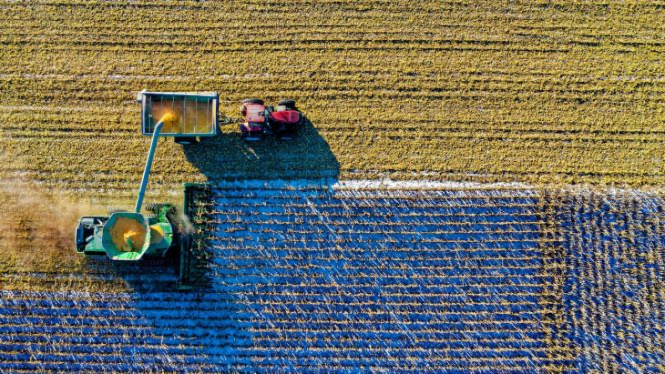Modern Farming Reduces Planting Costs by 60 Percent
- VIVA.co.id/Arianti Widya
Yogyakarta – The Indonesian Agriculture Minister Andi Amran Sulaiman stated that modern agriculture carried out in various regions, including Bantul, can reduce planting costs by up to 60 percent as compared to traditional agricultural practices.
"We have carried out planting, and we used a rice transplanter. The harvest also uses machines, likewise for the milling and so on," the minister stated after monitoring modern rice planting by the Barokah Farmers Group in Blawong Hamlet, Bantul, Yogyakarta, on Wednesday.
Menteri Pertanian (Mentan), Andi Amran Sulaiman
- Kementan
Minister Sulaiman remarked that the government has a grand idea of transforming traditional agriculture into modern agriculture so as to enable Indonesian farmers to compete with other countries by transforming.
"The aim of planting using machines is that if it is done manually using hands, it needs 20 people per hectare. If we use planting equipment, we only use one person. This means we are efficient, and planting costs can drop by up to 60 percent," the minister said.
Moreover, Minister Sulaiman explained that implementing a modern agriculture approach will further boost rice growth, as planting rice in one hectare of land can be completed in just one day.
"Meanwhile, if one person carries out planting (traditionally) alone, it takes 20 days. Therefore, the ripeness is not uniform. Those planted on the first day will ripen first, and so on, until the 20th day. Thus, the production cost is higher and not efficient,"
Furthermore, the Minister said that another advantage of modern agriculture is its ability to attract the young generation, as using planting machines is more profitable.
"It's impossible for millennial farmers to want to farm if it is not profitable. With modern farming, costs can fall by 60 percent, and production can increase by 50 percent. This is the government's goal," he informed.
The minister also stated that by utilizing technology, the earlier need to employ 20 farmers to plant in one hectare of land can be reduced to only one farmer. Thus, the other 19 farmers can focus on other economic activities.
"For example, (they can) raise chickens and ducks, so that our farmers' productivity increases, and the farmers' exchange rate rises," Minister Sulaiman concluded.





















